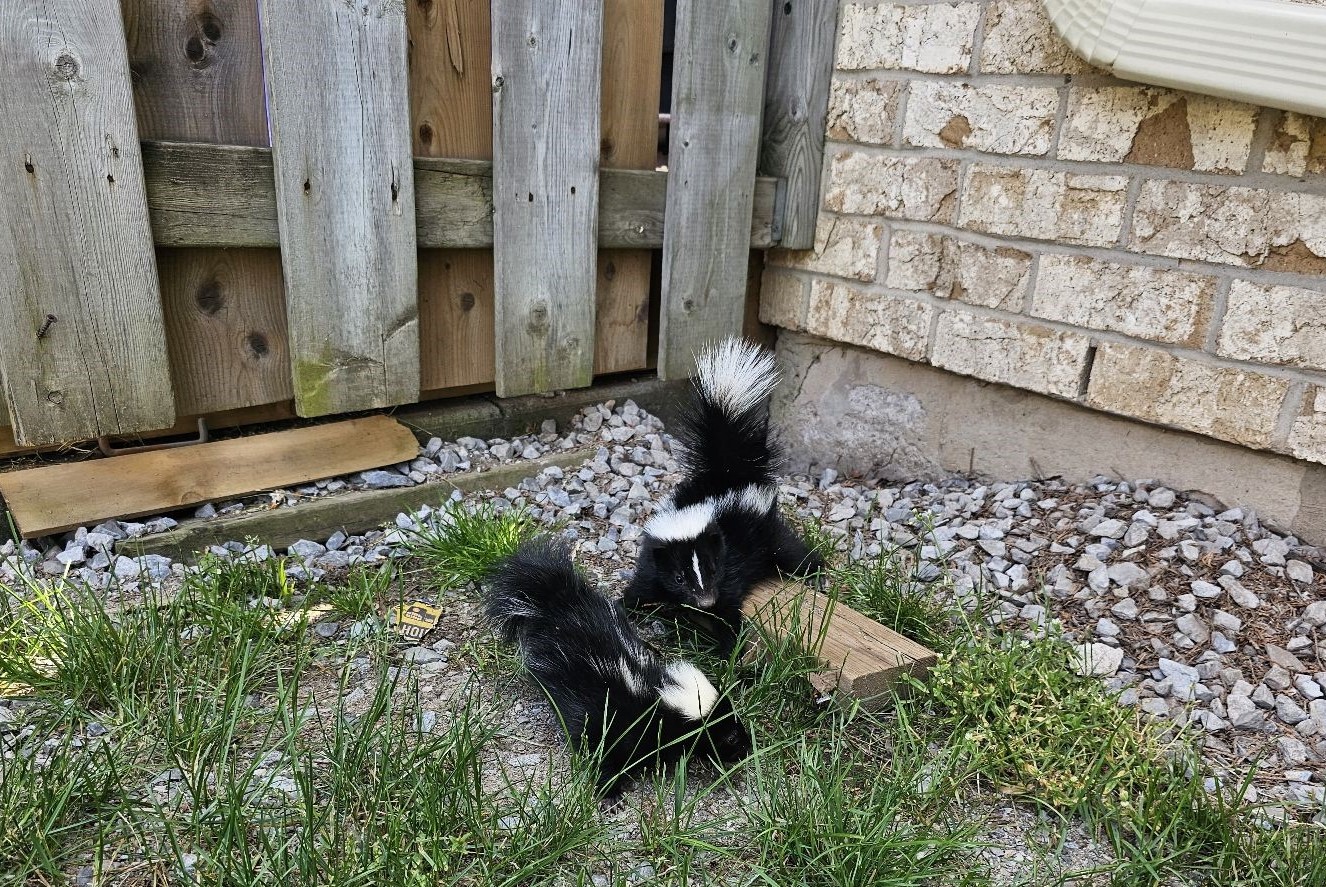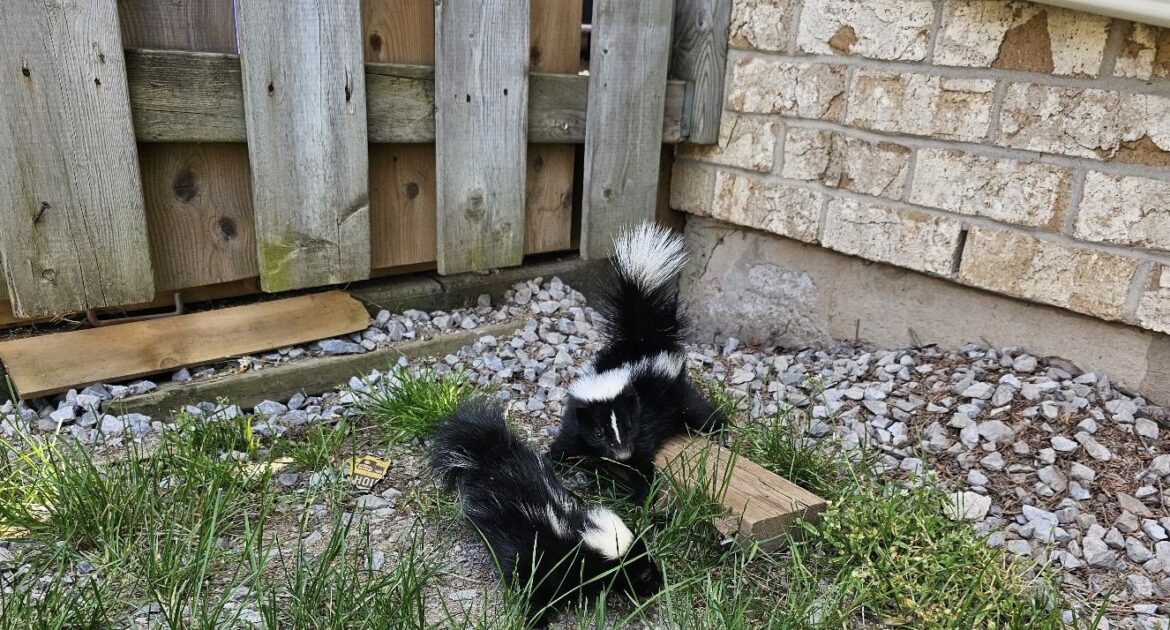Every year, as temperatures begin to rise, skunk mating season kicks into full gear, bringing with it unique challenges for homeowners and property managers. During this time, skunk mating behavior becomes more prominent, often resulting in increased activity and unwanted encounters. Male skunks tend to roam further in search of mates, which makes them more likely to invade yards and properties, leaving behind their distinct and unpleasant odor when conflicts arise. This heightened movement also means increased spraying incidents, as spraying is a frequent defense mechanism used during territorial disputes and mating confrontations.
To keep skunks away, it’s essential to implement effective preventive measures that discourage them from settling near your living spaces. Understanding their behaviors and patterns is key to creating a safer and more comfortable environment during this active season.
Understanding the Surge in Skunk Activity During Mating Season
Skunk mating season generally begins in late winter and continues through early spring. During this time, male skunks become more active, often wandering great distances in search of mating opportunities. They can travel miles from their den site, which increases the likelihood of them crossing paths with humans. This activity commonly results in more skunks coming into residential areas, often under porches, decks, and sheds—places that provide the security and cover they seek.
Unfortunately for homeowners in Littleton, this rise in activity often comes with an increase in spraying incidents. During mating season, skunks use their spray as a defense mechanism, particularly when threatened or startled by people or pets. The unmistakable, lingering odor of skunk spray can create an unpleasant and challenging situation to deal with.
Skunks are not aggressive by nature, but their spraying behavior is a response to perceived danger. Mating season heightens their stress levels, making them more prone to using their infamous defense mechanism. While the biological drive of skunks during this time is completely natural, it’s understandable that homeowners want to ensure they aren’t caught in the middle of it.
Why Skunks Are Drawn to Residential Areas
Skunks are opportunistic creatures. When it comes to finding shelter for mating and raising their young, they’re frequently drawn to residential areas due to easy access to food and protective denning spaces. Structures like decks, sheds, and porches provide ideal conditions for skunks to dig burrows or repurpose existing spaces into dens. The soft ground and often sheltered environment ensure they are physically protected from predators and harsh weather.
Once a skunk decides a property is a safe haven, the conflicts can begin. These animals are excellent diggers, capable of displacing significant amounts of dirt to get under structures. This not only weakens the structural integrity of a property over time but also introduces the risk of contamination through feces and urine.
Adding to the issue, it’s common for skunks to linger in these newly created or repurposed dens during the months before and after mating season. Female skunks often use these spaces not just for mating, but also to provide a safe environment for their young once they give birth in late spring. Once established, removing a skunk—especially an expectant or nursing mother—requires careful planning. Their presence increases not only the potential for spraying incidents but also long-term damage to the property.
Effective Strategies to Keep Skunks Away
Preventing skunks from establishing themselves on your property is the first step in managing the conflicts that can arise during mating season. While removal is always an option, prevention saves you the stress by proactively addressing the problem before it begins. Here are some practical methods to discourage skunks from coming near residential spaces:
- Secure Access Points: Skunks are drawn to sheltered areas. Screen off gaps under decks, sheds, and porches using heavy gauge steel mesh. Digging this mesh several inches into the ground will create a sturdy barrier skunks cannot burrow through.
- Remove Attractants: Skunks often infest areas with easy food sources. Secure trash bins with tight-fitting lids, avoid leaving pet food outside overnight, and thoroughly clean up from outdoor dining areas.
- Monitor Property for Signs: Regularly inspect your yard for skunk activity such as digging, tracks around entry points, or freshly moved soil near structures. Early identification can reduce the chance of deeper infestation.
The idea is to make your property less appealing to skunks. By doing so, you create an environment that naturally motivates them to find a more suitable denning space elsewhere.
Skedaddle’s Solutions for Skunk Removal and Prevention In Littleton
At Skedaddle Humane Wildlife Control, we’ve spent over 30 years helping homeowners deal with the challenges of skunk removal and prevention, especially during mating season. What sets us apart is our commitment to both humane and effective solutions. Skunks are highly sensitive animals, and every removal process requires precise handling to avoid unnecessary distress—for the animal and the homeowner.
When you work with us, we take on a comprehensive approach to addressing skunk problems. Our trained wildlife technicians begin by identifying active or potential entry points around your property. These spots are often difficult to spot without a trained eye, as skunks favor well-hidden, low-traffic spots to establish dens.
From there, we safely assess and remove skunks using humane techniques, such as one-way doors. Once the space has been cleared, we don’t stop there. We install durable barriers to prevent future burrowing, ensuring your property remains protected long after the removal process.
Additionally, our technicians clean and sanitize the affected areas to remove any residues left behind. This step is crucial not just for health safety, but also to eliminate odors and deterrents that could attract other wildlife in the future.
Why Prevention Matters Long-Term
Preventative measures are especially important not just for the short term but to avoid recurring issues with new skunks in the future. Once your property becomes a denning site, it can quickly establish a pattern where skunks return, especially during subsequent mating seasons. Prevention ensures that once you’ve addressed the issue, it doesn’t reappear.
Remember, skunks don’t hibernate during the winter but instead enter periods of inactivity. Even if you aren’t noticing a lot of activity on your property during the colder months, that doesn’t mean they aren’t already present. Getting ahead of the issue by addressing potential dens before mating season begins is often the best strategy for preventing larger problems down the road.
Act Now to Protect Your Property
Skunk mating season can undoubtedly introduce unique challenges for homeowners, but with the right strategies in place, these challenges can be effectively managed. Whether you’ve already noticed skunk activity on your property or want to ensure your home is protected before the problem arises, taking action is key.
At Skedaddle in Littleton, we’re here to help you enjoy peace of mind, knowing your property is free from unwanted visitors. With a proven track record of humane solutions and prevention tactics, we’ve helped countless homeowners avoid the stress and damage that skunk activity can bring. Contact us today, and let our expert team provide the solutions you need to keep skunks away—this season and beyond.




